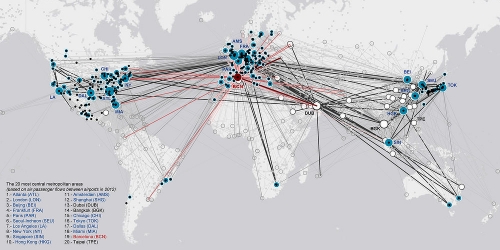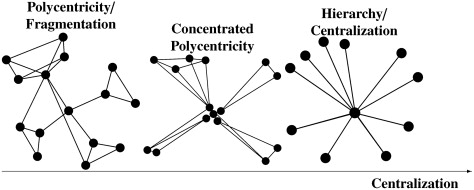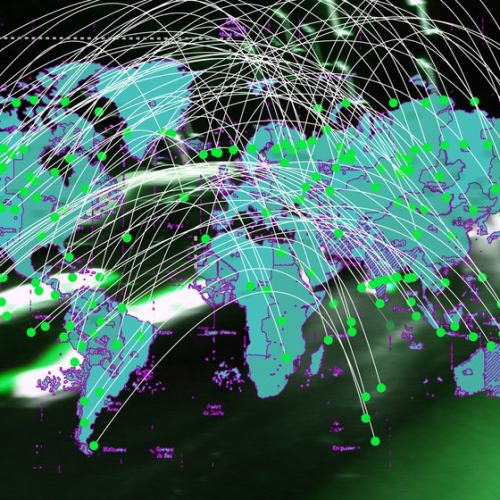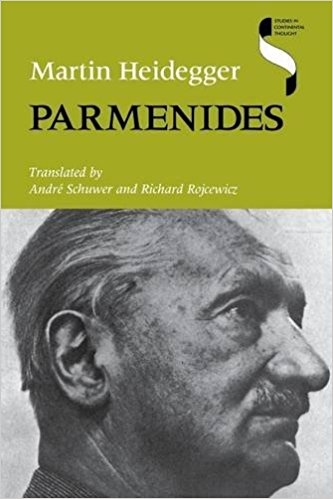jeudi, 22 février 2018
Multipolarity and polycentricity

Multipolarity and polycentricity
Ex: https://www.geopolitica.ru
The very term “multipolarity” is of American (Anglo-Saxon) origin, and in the third chapter we examined similar concepts that have been developed in other countries. As various scholars have indicated, varying interpretations of multipolarity have provoked certain conceptual dilemmas. For instance, a report on long-term global trends prepared by the Zurich Center for Security Studies in 2012 noted that:
The advantage of ‘multipolarity’ is that it accounts for the ongoing diffusion of power that extends beyond uni-, bi-, or- tripolarity. But the problem with the term is that it suggests a degree of autonomy and separateness of each ‘pole’ that fails to do justice to the interconnections and complexities of a globalised world. The term also conceals that rising powers are still willing to work within the Westernshaped world economic system, at least to some extent. This is why the current state of play may be better described as ‘polycentric’. Unlike ‘multipolarity’, the notion of ‘polycentricism’ says nothing about how the different centres of power relate to each other. Just as importantly, it does not elicit connotations with the famous but ill-fated multipolar system in Europe prior to 1914 that initially provided for regular great power consultation, but eventually ended in all-out war. The prospects for stable order and effective global governance are not good today. Yet, military confrontation between the great powers is not a likely scenario either, as the emerging polycentric system is tied together in ways that render a degree of international cooperation all but indispensable.
The Swiss scholars involved in this summation approached the issue from the standpoint of reviewing security issues in a globalized world and tried to find an adequate expression for contemporary trends. However, there also exist purely technical approaches and ideological theories which employ the term “polycentric”.
The concept of “polycentricity” had been used before to describe the functioning of complex economic subjects. Accordingly, if management theories are springboards for geopolitical practice, then this model’s basic elaborations already exist. In a literal sense, the term “polycentric” suggests some kind of spatial unit with several centers. However, the term does not specify what kind of centers are in question, hence the obvious need to review various concepts and starting points before discussing polycentrism.

Four levels of this concept can be discussed in the context of political-administrative approaches. The analytical-descriptive level is needed for describing, measuring, and characterizing the current state of a spatial object by means of precisely determining how long a country or capital can be “polycentric.” Secondly, this concept can be understood in a normative sense which might help, for example, in reorganizing the spatial configuration of an object, i.e., either to promote/create polycentrism or support/utilize an existing polycentric structure. Thirdly, when it comes to spatial entities, it is necessary to specify their spatial scale, i.e., at the city level, city-region, mega-regional level, or even on the national or transnational levels. Upon closer examination, the concept of polycentrism concept thus challenges our understanding of centers in urban areas, since such can concern either their roles and functional ties (relations) or their concrete morphological forms (the structure of urban fabric). This differentiation between the functional and morphological understandings of polycentrism constitutes the fourth dimension.
In the contemporary situation which features the presence of city-states and megalopoli that can easily compete with some states in the classical understanding in the most varied criteria (number of residents and their ethnic identity, length of external borders, domestic GDP, taxes, industry, transport hubs, etc.), such an approach seems wholly appropriate for more articulated geopolitical analysis. Moreover, in the framework of federal models of state governance, polycentrism serves as a marker of complex relations between all administrative centers. Regional cooperation also fits into this model since it allows subjects to “escape” mandatory compliance with a single regulator, such as in the face of a political capital, and cooperate with other subjects (including foreign ones) within a certain space.
To some extent, the idea of polycentrism is reflected in offshore zones as well. While offshores can act as “black holes” for the economies of sovereign states, on the other hand, they can also be free economic zones removing various trade barriers clearly within the framework of the operator’s economic sovereignty.
It should also be noted that the theory of polycentrism is also well known in the form of the ideological contribution of the Italian community Palmiro Togliatti as an understanding of the relative characteristics of the working conditions facing communist parties in different countries following the de-Stalinization process in the Soviet Union in 1956. What if one were to apply such an analysis to other parties and movements? For example, in comparing Eurosceptics in the EU and the conglomerate of movements in African and Asian countries associated with Islam? Another fruitful endeavor from this perspective could be evaluating illiberal democracies and populist regimes in various parties of the world as well as monarchical regimes, a great variety of which still exist ranging from the United Kingdom’s constitutional monarchy to the hereditary autocracy of Saudi Arabia which appeared relatively recently compared to other dynastic forms of rule. Let us also note that since Togliatti the term “polycentrism” has become popular in political science, urban planning, logistics, sociology, and as an expression for unity in diversity.

In 1969, international relations and globalization expert Howard V. Perlmutter proposed the conceptual model of EPG, or Ethnocentrism-Polycentrism-Geocentrism, which he subsequently expanded with his colleague David A Heenan to include Regionalism. This model, famously known by the acronym EPRG, remains essential in international management and human resources. This theory posits that polycentrism, unlike ethnocentrism, regionalism, and geocentrism, is based on political orientation, albeit through the prism of controlling commodity-monetary flows, human resources, and labor. In this case, polycentrism can be defined as a host country’s orientation reflecting goals and objectives in relation to various management strategies and planning procedures in international operations. In this approach, polycentrism is in one way or another connected to issues of management and control.
However, insofar as forms of political control can differ, this inevitably leads to the understanding of a multiplicity of political systems and automatically rejects the monopoly of liberal parliamentarism imposed by the West as the only acceptable political system. Extending this approach, we can see that the notion of polycentrism, in addition to connoting management, is contiguous to theories of law, state governance, and administration. Canada for instance has included polycentricity in its administrative law and specifically refers to a “polycentric issue” as “one which involves a large number of interlocking and interacting interests and considerations.” For example, one of Canada’s official documents reads: “While judicial procedure is premised on a bipolar opposition of parties, interests, and factual discovery, some problems require the consideration of numerous interests simultaneously, and the promulgation of solutions which concurrently balance benefits and costs for many different parties. Where an administrative structure more closely resembles this model, courts will exercise restraint.”
Polycentric law became world-famous thanks to Professor Tom Bell who, as a student at the University of Chicago’s law faculty, wrote a book entitled Polycentric Law in which he noted that other authors use phrases such as “de-monopolized law” to describe polycentric alternatives.
Bell outlined traditional customary law (also known as consolamentum law) before the establishment of states and in accordance with the works of Friedrich A. Hayek, Bruce L. Benson, and David D. Friedman. Bell mentioned the customary law of the Anglo-Saxons, ecclesiastical law, guild law, and trade law as examples of polycentric law. On this note, he suggests that customary and statutory law have co-existed throughout history, an example being Roman law being applied to Romans throughout the Roman Empire at the same time as indigenous peoples’ legal systems remained permitted for non-Romans.

Polycentric theory has also attracted the interest of market researchers, especially public economists. Rather paradoxically, it is from none other than ideas of a polycentric market that a number of Western scholars came to the conclusion that “Polycentricity can be utilized as a conceptual framework for drawing inspiration not only from the market but also from democracy or any other complex system incorporating the simultaneous functioning of multiple centers of governance and decision making with different interests, perspectives, and values.” In our opinion, it is very important that namely these three categories - interests, perspectives, and values - were distinguished. “Interests” as a concept is related to the realist school and paradigm in international relations, while “perspectives” suggests some kind of teleology, i.e., a goal-setting actor, and “values” are associated with the core of strategic culture or what has commonly been called the “national idea,” “cultural-historical traditions”, or irrational motives in the collective behavior of a people. For a complex society inhabited by several ethnic groups and where citizens identify with several religious confessions, or where social class differences have been preserved (to some extent they continue to exist in all types of societies, including in both the US and North Korea, but are often portrayed as between professional specialization or peculiarities of local stratification), a polycentric system appears to be a natural necessity for genuinely democratic procedures. In this context, the ability of groups to resolve their own problems on the basis of options institutionally included in the mode of self-government is fundamental to the notion of polycentrism.
Only relatively recently has polycentrism come to be used as an anti-liberal or anti-capitalist platform. In 2006, following the summit of the World Social Forum in Caracas, Michael Blanding from The Nation illustrated a confrontation between “unicentrism” characterized by imperial, neo-liberal, and neo-conservative economic and political theories and institutions, and people searching for an alternative, or adherents of “polycentrism.” As a point of interest, the World Social Forum itself was held in a genuinely polycentric format as it was held not only in Venezuela, but in parallel also in Mali and Pakistan. Although the forum mainly involved left socialists, including a large Trotskyist lobby (which is characteristic of the anti-globalist movement as a whole), the overall critique of neoliberalism and transnational corporations voiced at the forum also relied on rhetoric on the rights of peoples, social responsibility, and the search for a political alternative. At the time, this was manifested in Latin America in the Bolivarian Revolution with its emphasis on indigenism, solidarity, and anti-Americanism.
It should be noted that Russia’s political establishment also not uncommonly uses the word “polycentricity” - sometimes as a synonym for multipolarity, but also as a special, more “peace-loving” trend in global politics insofar as “polarity presumes the confrontation of poles and their binary opposition.” Meanwhile, Russian scholars recognize that comparing the emerging polycentric world order to historical examples of polycentricity is difficult. Besides the aspect of deep interdependence, the polycentricity of the early 21st century possesses a number of different, important peculiarities. These differences include global asymmetry insofar as the US still boasts overwhelming superiority in a number of fields, and a multi-level character in which there exist: (1) a military-diplomatic dimension of global politics with the evolution of quickly developing giant states; (2) an economic dimension with the growing role of transnational actors; (3) global demographic shifts; (4) a specific space representing a domain of symbols, ideals, and cultural codes and their deconstructions; and (5) a geopolitical and geo-economic level.
Here it is necessary to note that the very term “polycentricity” in itself harbors some interesting connotations. Despite being translated to mean “many”, the first part (“poly-“) etymologically refers to both “pole” and “polis” (all three words are of Ancient Greek origin), and the second part presupposes the existence of centers in the context of international politics, i.e., states or a group of states which can influence the dynamic of international relations.
 In his Parmenides, Martin Heidegger contributed an interesting remark in regards to the Greek term “polis”, which once again confirms the importance and necessity of serious etymological analysis. By virtue of its profundity, we shall reproduce this quote in full:
In his Parmenides, Martin Heidegger contributed an interesting remark in regards to the Greek term “polis”, which once again confirms the importance and necessity of serious etymological analysis. By virtue of its profundity, we shall reproduce this quote in full:
Πόλις is the πόλоς, the pole, the place around which everything appearing to the Greeks as a being turns in a peculiar way. The pole is the place around which all beings turn and precisely in such a way that in the domain of this place beings show their turning and their conditions. The pole, as this place, lets beings appear in their Being and show the totality of their condition. The pole does not produce and does not create beings in their Being, but as pole it is the abode of the unconsciousness of beings as a whole. The πόλις is the essence of the place [Ort], or, as we say, it is the settlement (Ort-schaft) of the historical dwelling of Greek humanity. Because the πόλις lets the totality of beings come in this or that way into the unconcealedness of its condition, the πόλις is therefore essentially related to the Being of beings. Between πόλις and “Being” there is a primordial relation.
Heidegger thus concludes that “polis” is not a city, state, nor a combination of the two, but the place of the history of the Greeks, the focus of their essence, and that there is a direct link between πόλις and ἀλήθεια (this Greek word is usually translated into Russian as “truth”) Thus, in order to capture polycentricity, one needs to search for the foci and distribution areas of the essence of the numerous peoples of our planet. Here we can once again mention strategic cultures and their cores.
Translated from Russian by Jafe Arnold.
Multipolarity is the best future for Europe
Iranian view on Multipolarity in the New World
South America In The Emerging Multipolar World Order
Prisoners of Friedman and Brzezinski: Neoliberal America vs. Multipolarity
18:44 Publié dans Définitions, Philosophie, Théorie politique | Lien permanent | Commentaires (0) | Tags : leonid savin, polycentricité, multipolarité, géopolitique, philosophie, philosophie politique, théorie politique, sciences politiques, politologie, définition |  |
|  del.icio.us |
del.icio.us |  |
|  Digg |
Digg | ![]() Facebook
Facebook


